PRODUCT LIST
How to use green cooling solutions to construct a more eco-friendly datacenter
.gif)
Datacenter renovation in an enterprise’s existing office building can be especially troublesome for datacenter architects. Conditions such as space, floor height and availability of outside windows can significantly impact the renovation. The cooling system, which accounts for nearly half of datacenter power consumption, is the key to a green datacenter. In this case study, we demonstrate sophisticated cooling system methods to use when renovating a green datacenter within an enterprise office building.
Background
In the Taipei headquarters of Delta Electronics, there were two separate datacenters located in two office buildings. For this datacenter renovation project, the two datacenters were merged into a new one to achieve higher resource and system centralization. High reliability, eco-friendliness and superior scalability with modular design were the major objectives of this datacenter project.
.gif)
Since Delta Electronics is a multinational enterprise with sales offices, manufacturing facilities, and R&D centers around the world, ‘computerization’ is a must for efficient global operations. To safeguard the various critical systems and IT applications like Enterprise Resource Planning (ERP), Mail Server, WebServer and other Application Servers, the reliability of datacenter infrastructure is ultimately the top priority.
Last but not least, with a company mission of “Smarter, Greener, Together”, Delta aimed to build this new datacenter with an average annual power usage effectiveness (PUE) lower than 1.43, which meets the criteria for gold-level datacenter efficiency defined by Green Grid.
Overview
The overall space of the new datacenter is around 230 m2 with Zone A/B for cold aisle containment and C/D for hot aisle containment. There are 63 racks with total IT capacity planned to achieve 240-280kW in the five-year time horizon. Two uninterruptible power supplies (UPS) units and several battery cabinets are located in a separate room. For optimized visualization of datacenter monitoring, there is a display wall with 2x3 LCD panels that demonstrates Delta’s data center infrastructure management system (InfraSuite Manager), IT device utilization rate, and real-time video monitoring.
.gif)
| |
Cooling System |
There were several cooling issues in the original two datacenters that accounted for a huge amount of energy consumption every year. The PUE was 2.01, which meant 1kW of IT power consumption required the same level as 1kW of non-IT power. To significantly improve energy efficiency and achieve a PUE lower than 1.43, Delta adopted the following six countermeasures:
|
1. Hot / Cold Aisle Containment & RowCool Application
Hot / cold aisle containment avoids mixed air and increases cooling efficiency. Together with Delta RowCool units which are close to hot spots, the heat can be effectively removed to avoid the overheating and shutdown of IT equipment.

2. Water-Cooled Cooling System
Compared with a traditional air-cooled system, the water-cooled system provides 30% energy savings. Taking a 40RT (Refrigeration Ton) system as an example, the power consumption can be decreased from 1.25kW/RT to 0.89kW/RT.
|
3. Variable-frequency HVAC System
The continuously variable fan speed control and variable water flow control of the RowCool system contributes to huge energy savings. There is an estimated power savings of 27% once the fan speed decreases by 10%. Not only are the DC fans of RowCool designed as frequency variable, the outdoor units are also embedded with variable-frequency technology―the cooling tower fans are variable air volume control; and the chiller pump and condenser pump are variable water volume control.
.gif)
4. Free Cooling (air side and water side)
For climate conditions in Taipei, Taiwan, free cooling can be used 46% of the time in a year. Once the temperature drops to lower than 25℃, the ‘air side’ free cooling is automatically triggered to introduce outside cold air to the datacenter. When this occurs, it is not necessary to power on RowCool units, pumps, cooling towers and chillers. If the temperature drops lower than 15℃, the ‘water side’ free cooling by heat exchanger and cooling tower is triggered, and the datacenter chillers are turned off for energy savings.
.gif)
5. Intelligent Synchronization of Datacenter Chillers and Office Building Chillers
The Delta headquarters' office building in Taipei is certified as a ‘Diamond-Rated Green Building’ with 58% energy savings compared with the average power consumption of a normal office building. There are two chiller systems in the building:
|
To utilize the high efficiency of building chillers during the day, the ‘datacenter chillers’ are turned off and the datacenter relies only on ‘building chillers’ to supply chilled water. At night, the ‘datacenter chillers’ are turned on to serve the datacenter’s continuous cooling requirement. The datacenter cooling system is intelligently synchronized with the building cooling system for the ultimate in optimizing power savings.
6. Optimal Datacenter Temperature Setting
Based on international standards, the recommended temperatures for datacenters varies from 18~27℃ to 20~25℃. Traditional datacenters usually set temperatures for 18~20℃ which falls within the recommended temperature range, but there is still room to increase this.
|
According to a rule of thumb for datacenters, a 1℃ increase in the datacenter temperature leads to 2~3% in energy savings. By this assumption, if we increase the cold aisle temperature from 18~20℃ to 25℃, the datacenter can obtain 10~14% in power savings. In addition to the cold aisle temperature, the inlet water temperature of RowCool can also be increased for more power savings.
The inlet water temperature can also be optimized. The traditional practice is to set cooling inlet water temperature at 7℃. If we increase the inlet water temperature to 13℃, we can achieve 20% in power savings.
.gif)
Apart from cooling solutions, as a datacenter total infrastructure solution provider, Delta has also applied its highly efficient power systems, modular racks and environment management system to this datacenter, making it completely “green” in every aspect.
| |
Power System |
The datacenter requires high reliability, efficiency, and scalability. To meet these various demands is a challenge to the power system. In the power room of this new datacenter, the adopted UPS system - Delta’s Modulon DPH UPS series - is a new generation of fully modular, hot swappable and highly efficient UPS with AC-AC efficiency of up to 96%. The hot-scalable power modules support seamless datacenter growth for a mid- to long-term time horizon.
Delta’s PDC and PDU are also designed with a modular concept, for example, the output breakers are hot-swappable and can be expanded up to 42 units for each power panel. The PDC and PDU offer superior power protection and monitoring, and the flexibility and scalability to match actual power distribution requirements.
.gif)
| |
Racks and Accessories |
Air management is essential to a datacenter with racks of middle or high power density. Delta’s new datacenter is planned to achieve 10 to 15kVA per rack in the long term. Delta’s modular racks offer heat dissipation via 70% perforation to meet high density IT room requirements. The high load bearing of the racks supports 1420kg static weight or 1000kg rolling weight and can save valuable datacenter space.
| |
Environment Management System |
InfraSuite Manager, Delta’s Data Center Infrastructure Management (DCIM) system, integrates all facilities and IT domains on a single platform simultaneously. The EnviroProbe and EnviroStation work together for a seamless, immediate, and complete management of energy, power system, cooling, environment, security, asset, server monitoring, and more. The historical PUE records assist an IT manager in analyzing and understanding the power usage effectiveness of the datacenter.

Beneficial Results
After adopting several green cooling, power, and rack solutions, this new datacenter is expected to gain the following benefits:
- PUE optimization:The PUE improved from 2.01 to 1.44 (Starting from July to October 2014). It is estimated to achieve its target of becoming a gold level datacenter. The PUE will definitely be further improved during the free cooling conditions of wintertime.

- Energy saving:Total power consumption decreased by 30%.
- Space saving:Total datacenter space reduced from 170+130=300m2 to 230m2 with 23% space savings.
Delta’s Mission Critical Infrastructure Solutions (MCIS) business unit once again proves that its InfraSuite datacenter infrastructure solutions is an optimal option for constructing highly reliable and energy-efficient datacenters by featuring scalability, modularity, standardization and ease-of-maintenance.





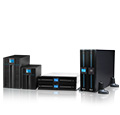

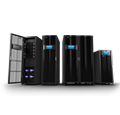

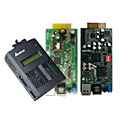


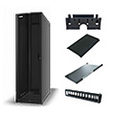
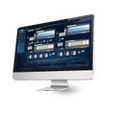
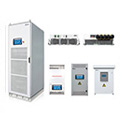
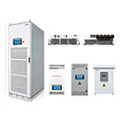















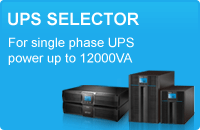
.gif)
